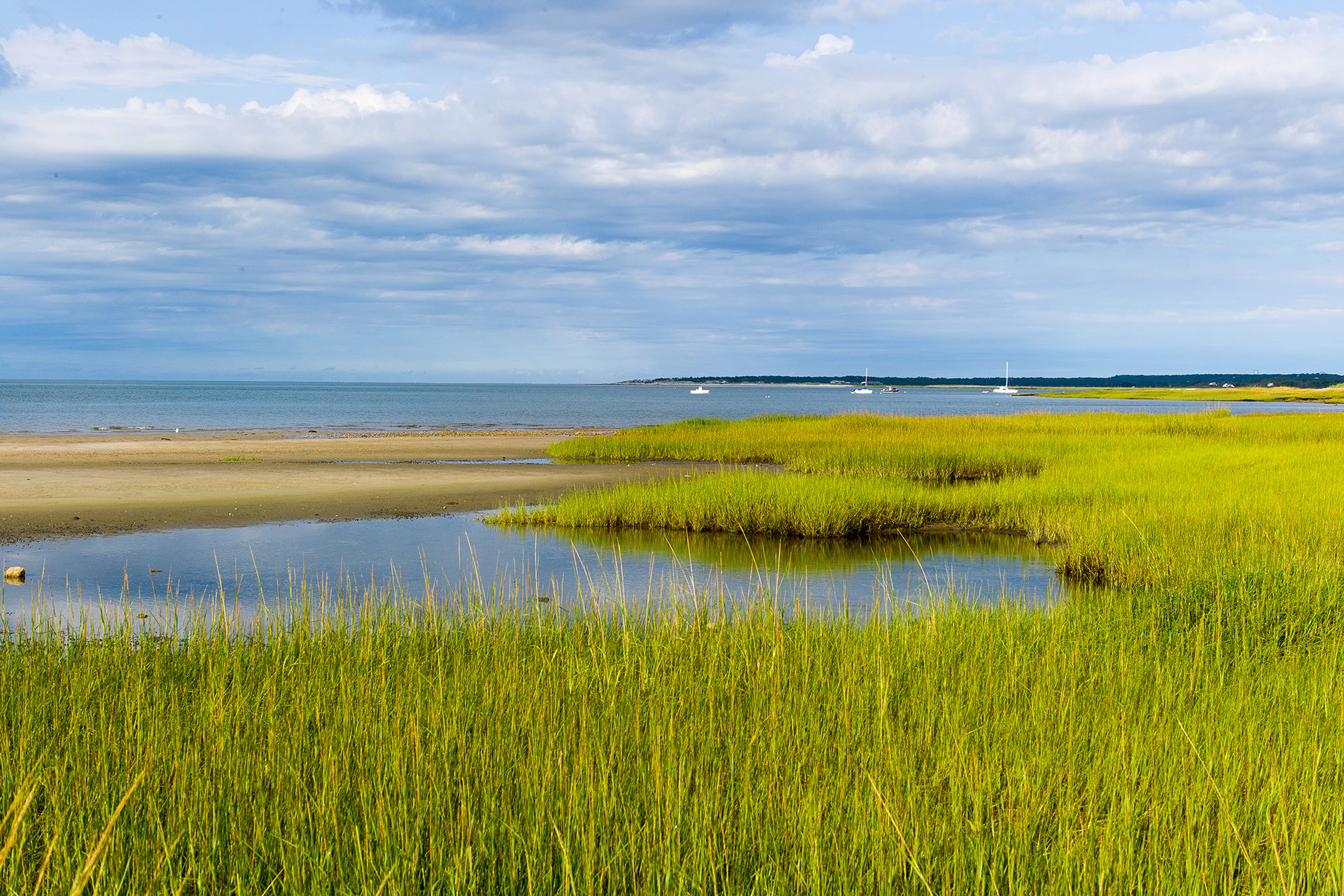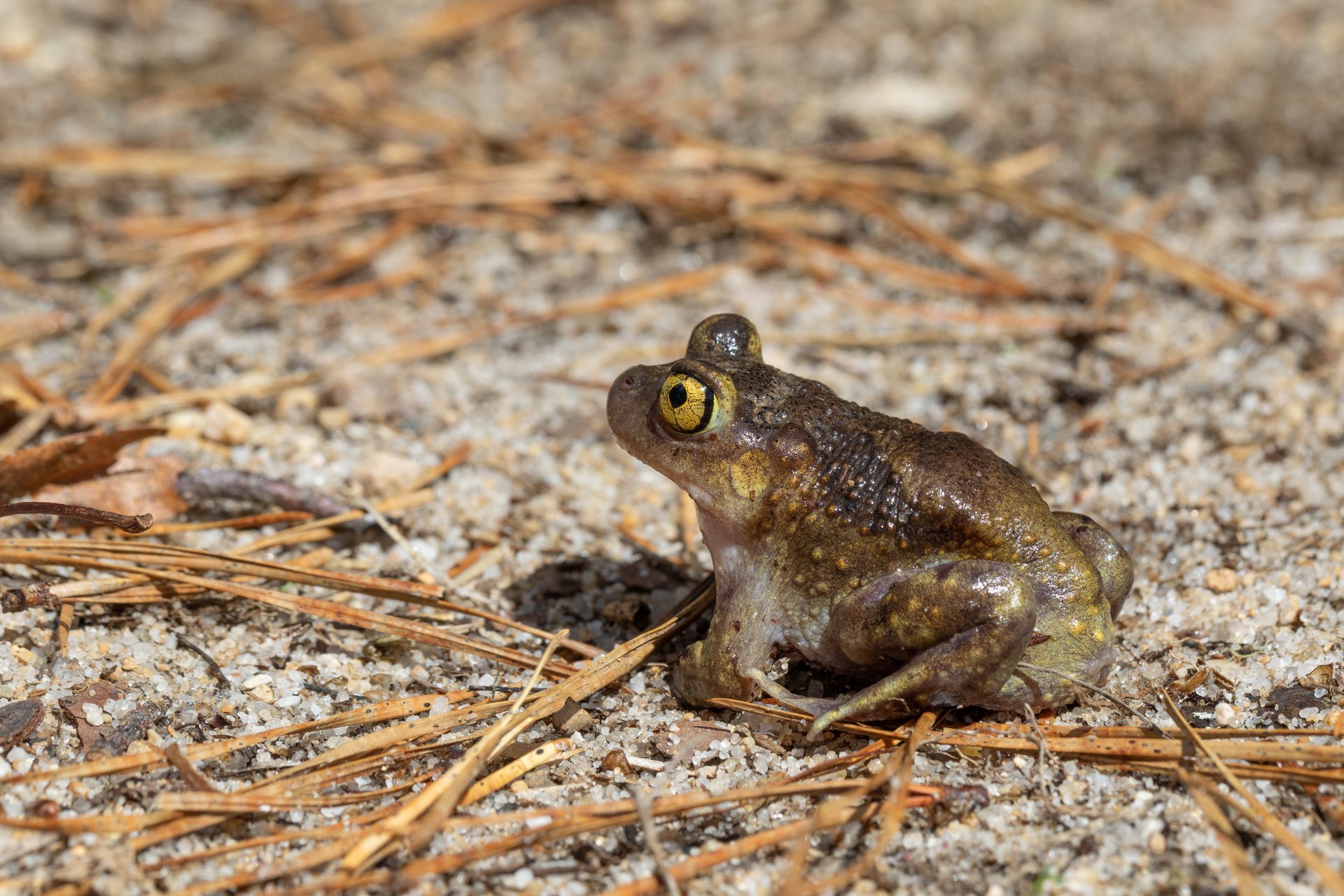Long Pasture's Spadefoot Toad Conservation Project
The Eastern Spadefoot Toad was once widespread in coastal parts of Massachusetts. But these days it’s found in only a few locations.
On Cape Cod, Long Pasture Wildlife Sanctuary is working with partners to establish a viable population of spadefoots at its Ashumet Holly Wildlife Sanctuary in East Falmouth, where the toads used to be found.
What’s a Spadefoot Toad?
The spadefoot toad gets its name from the hard digging structures on its hind feet. It has a striped hourglass pattern, small warts, and catlike pupils. Rarely seen, it spends much of its time underground or hunting for small prey at night. After a strong rainfall event during the warm months, it breeds in shallow temporary pools. Learn more about Eastern Spadefoot Toads
Reintroducing Spadefoots
Long Pasture Wildlife Sanctuary director Ian Ives and his partners, including Tom Biebighauser of Wetland Restoration and Training LLC, Bryan Windmiller, of Zoo New England, the U.S. Fish and Wildlife Service’s Partners for Wildlife Program, and the Massachusetts Division of Fisheries and Wildlife, have restored over 20 new breeding pools in open fields as well as woodlands and formerly cultivated land across the state.
Since 2011, spadefoot toad project director Jay Cordeiro and the team have released thousands of young spadefoots translocated to Ashumet Holly from a healthy population at Sandy Neck barrier beach in Barnstable. This project is a first for the species and only the third vertebrate species translocation that Mass Fish and Wildlife has permitted within Massachusetts.
Before the toads set foot in their new habitat, they were raised and cared for by students in area classrooms. Between 2011 and 2018, 850 students from 26 schools participated in headstarting the spadefoots until they metamorphosed from tadpoles to toads, at which point they were ready for release.
A Critical Milestone
The project’s key measure of success was to document translocated toads breeding at Ashumet Holly. Each spring and summer the field team monitored the vernal pools for signs of breeding—the sound of calling males and sightings of toads in the pools (adult spadefoots use vernal pools only for breeding).
But it wasn’t until 2021, following several days of heavy rain in May, that the project finally recorded its first evidence of breeding spadefoots, including calling males, mating pairs, and even eggs and tadpoles!
In 2022, the second milestone was reached: spadefoots bred successfully again. More recently, eggs, and tadpoles were recorded in two of three specially created vernal pools where breeding activity was detected.
The pools at Ashumet Holly will continue to be monitored in the hope that the breeding population has become established.
You Can Help
You can help protect spadefoot toads by supporting efforts to restore and create breeding habitat. Contact us to find out about our vernal pool projects and education programs on Cape Cod. You can also visit the vernal pools at Ashumet Holly and Long Pasture.
If you’d like to help preserve the spadefoot toad for generations to come consider making a donation to support our work.




